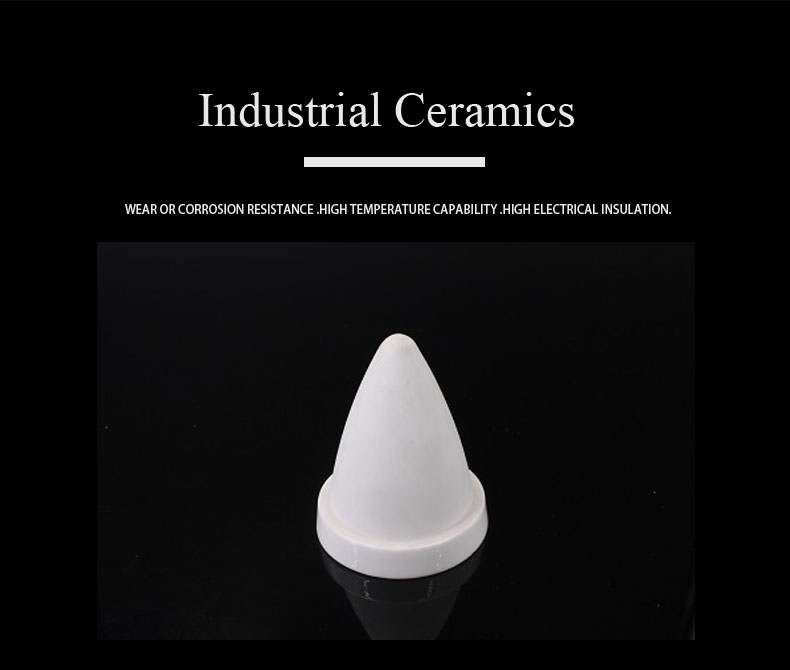The following are some common applications of industrial ceramics:
Advanced engine technology - the high hardness, stiffness and high temperature resistance of industrial ceramics provide a better material choice for the development of advanced automotive engines such as adiabatic diesel engines, gas turbines and Stirling engines. Because the high-temperature environment of automobile engine requires highly durable and high-temperature resistant materials to withstand these conditions, the use of industrial ceramic materials ensures the highest engine performance, while also extending the overall service life of the engine and all engine components.
Welding technology - industrial ceramics are very suitable for welding technology. Components made of zirconia, such as centering pins, are particularly suitable because of their high toughness and resistance to wear during welding. Especially in the automated production process, components made of industrial ceramics also have obvious cost advantages, higher product quality and significantly longer service life of the machine.
Fluid technology - in fluid technology, the key requirements for components are corrosion resistance, abrasion resistance, and low specific gravity. Components made from industrial ceramics have these properties and are also biocompatible, which means they could also be used in the food industry and medical technology.
Mechanical industry - ceramic components meet different requirements in mechanical and plant engineering applications. These include high mechanical strength, wear resistance, thermal or electrical insulation, and thermal conductivity. These are the characteristics that industrial ceramics can have.
Induction technology - industrial ceramics are widely used in induction field. Silicon nitride is most commonly used as a material because of its wear-resistant, electrically insulating and nonmagnetic properties. In addition, it is extremely resistant to temperature changes.

Industrial ceramics, of course, the purpose of much more than more industry or technology, but they also have poor tensile strength can be lower than the tensile strength (15 times), some poor mechanical strength, brittle, and it is difficult to design faults, these cause industrial ceramics can't like metal, glass, plastic, polymer, refractory materials, and other general materials commonly used in that way. However, due to their excellent engineering performance, components made of highly specialized ceramic materials are increasingly becoming the only solution to technical problems that traditional technologies cannot overcome. And all industries are actively trying to use these features to achieve a variety of innovative applications that could not be achieved before, or to upgrade existing products to achieve better performance and longer service life. To date, the global industrial ceramics market is valued at more than $60 billion.
Take the field of environmental protection, in the past few years, the industrial ceramic material included in the areas of environmental protection industry trend has continued to grow, in is used to control the air pollution levels, biofuels, carbon sequestration, coal gasification, environmental restoration, green building technology, large capacity storage, solar technology and advanced core technology, can find the latest application of some industrial ceramics. Some of these products (for example, solid oxide fuel cell (SOFC) systems) are made entirely of industrial ceramics, as is the benefit of replacing individual key components (such as insulation) with ceramics.
Solid oxide fuel cells (sofcs) - sofcs have shown great potential as an efficient, pollution-free energy source since they were first introduced to the market in 2002, and have been shown to emit the lowest greenhouse gas (GHG) emissions compared to all other non-renewable energy sources. SOFC USES an oxide conductive ceramic as an electrolyte to ensure that electrons are released and electricity is generated. The diagram above shows how SOFC works.
Industrial ceramics and solar energy - a team of purdue university researchers recently developed a new ceramic-metal composite of zirconium carbide and tungsten to replace the materials currently used in heat exchangers in solar power plants. Compared with stainless steel or nickel alloy base heat exchangers, the composite material has shown the effect of improving heat exchange and greatly reducing the cost.
In the past few years, the development of industrial ceramic materials has been developed to control and manipulate their specific microstructure, which will greatly expand their application scope in various industries. Therefore, industrial ceramics are considered to be one of the most effective materials today.




